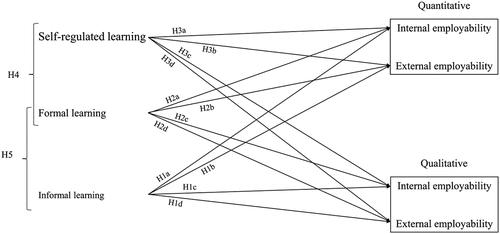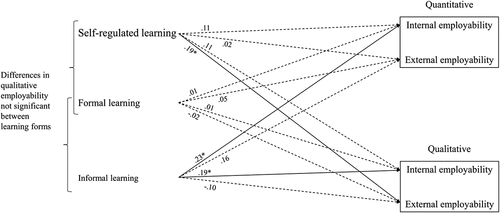Figures & data
Table 1. Overview of four employability types.
Figure 1. Conceptual Model of the Relationships Between Work-related Learning and Employability.

Table 2. Descriptive statistics and correlations among time 1 variables (beneath the diagonal) and time 2 variables (above the diagonal).
Figure 2. Effects of Work-related Learning on Employability.

Table 3. Uncontrolled and Controlled Models of the Effects of Work-related Learning on Employability.
